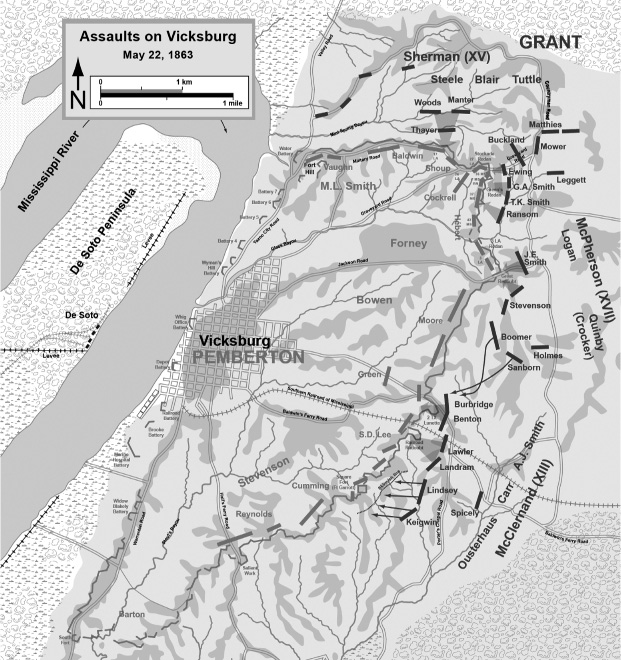Midpoint of the War: May to July 1863Small Towns in a Big War |
What did Vicksburg look like to the oncoming Yankees? |
A Union officer described it thus:
A long line of high, rugged, irregular bluffs, clearly cut against the sky; crowned with cannon which peered ominously from embrasures to the right and left as far as the eye could see. Lines of heavy rifle-pits, surmounted with head logs, ran along the bluffs, connecting fort with fort, and filled with veteran infantry.
Very likely, no Confederate position—of this campaign or even the entire war—presented quite so daunting an outward appearance as Vicksburg in May 1863. Had the Union Navy not commanded the waterways below the city, there would have been no possibility of taking the place. But Grant, as ever, believed his men could achieve the near-impossible. They had already done so by marching to take Jackson, winning the Battle of Champion Hill, and scattering their foes. Knowing that a long siege might be detrimental to morale, Grant decided on a frontal assault.

This map shows the positions of the Union and Confederate armies on May 22, 1863, during the siege of Vicksburg, Mississippi. The Confederate loss was a huge setback for the South and is generally considered a major turning point of the war.
